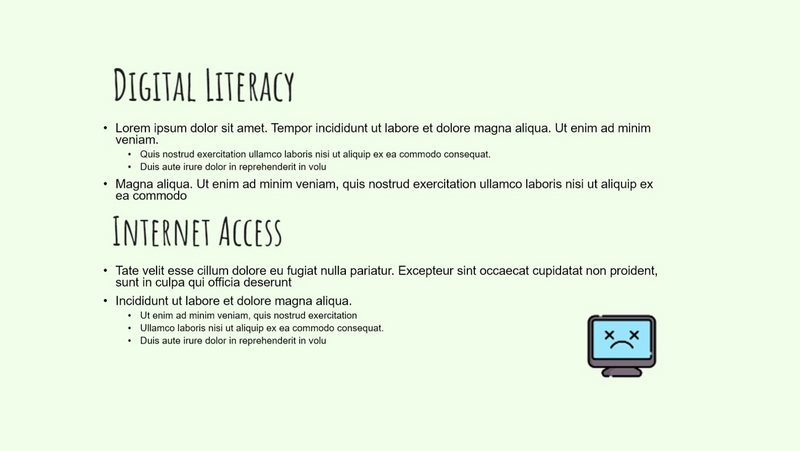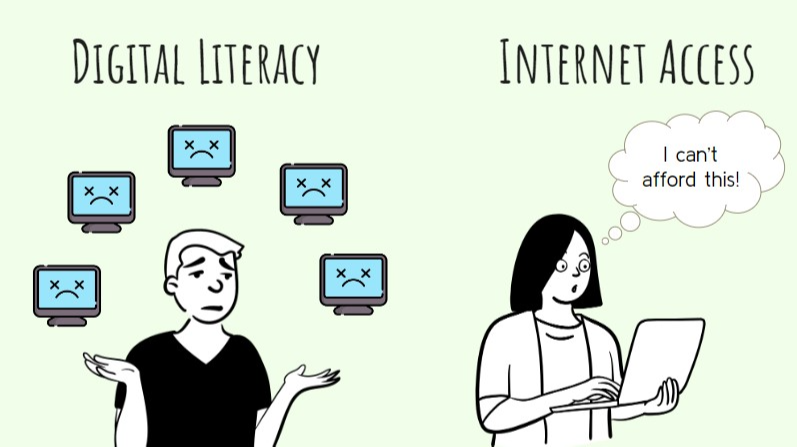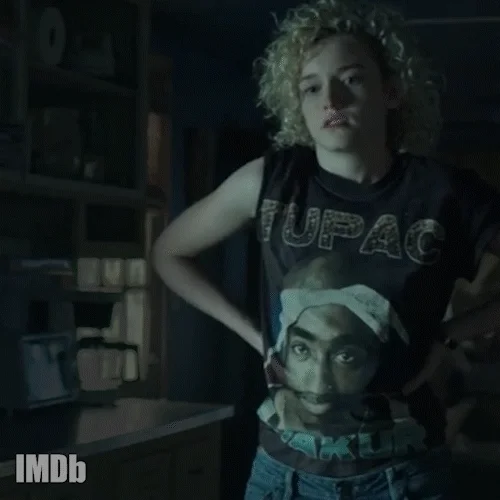
This logo isn't an ad or affiliate link. It's an organization that shares in our mission, and empowered the authors to share their insights in Byte form.
Rumie vets Bytes for compliance with our
Standards.
The organization is responsible for the completeness and reliability of the content.
Learn more
about how Rumie works with partners.
Alright. This isn't a TED Talk, but your team still is counting on you to impress the stakeholders with this presentation. So yeah,no pressure!

Alright then...take a second to catch your breath.
I’ll share some tips to help you get your presentation just right. Here's how can you use your presentation skills to enhance the message for the stakeholders.
#1. Use visuals in place of text.
Does your PPT slide look like this?

Ok, you need to get rid of some text. And by some text, I mean pretty much all of it.
Let the visuals do the talking.
Use relevant visuals to guide your presentation, not text.
It doesn't make sense to have everything you say written down on the slide word for word. Research actually suggests this will lessen the effectiveness of your message.
Try again.

Quiz
Why is this second slide above more effective than the first one? Select all that apply:
Remember, effective slides have minimal text and use images to represent the main ideas. Looking professional and having attractive fonts is also nice, but the content is more important than the style.
#2. Answer the "What's in it for me?" question.
Stakeholders are typically interested in how your presentation or message benefits them or their organization.

So what's in it for them?
Identify their interests.
Do your homework. Find out what they want or need before you create your presentation.
Highlight the benefits.
Explain how your presentation positively impacts their goals.
Prove it.
Give them evidence to support your claim. Show them data and examples.
Look at how these presenters answer the question:
Oscar: "We have the best staff in our team. All the members have many years of experience in the field."
Megan: "This new line is going to be great. We have a fantastic product. We know this is really going to boost sales in the next quarter."
Nimesh: "I know you’ve been struggling to reduce marketing costs. We're proposing a budget that will save on advertising while maintaining our brand’s outreach."
Joe: "I've been doing this for a long time and I can tell you from experience that this decision will play a key role in the company’s future."
Quiz
Which statement is the most likely to capture the stakeholders' attention?
While all of the statements make some attempt to be persuasive, Nimesh is the one who has acknowledged the stakeholders' goal and explained why their presentation is relevant.
#3. Tell a compelling story.
Capture their attention.
Just as a good book or movie can grab your attention, stories in presentations can do the same.
Instead of starting with boring facts, you start with a story that makes people want to listen.
Example: "When Dr. Herman was a child, he would often get made fun of for being bad at sports. This experience drove him to challenge himself and become the first man to cycle around the state."
Make the information memorable.
Think of a story as a fun and interesting way to help the audience remember your message.
Stories help your brain remember things better because they make listening more fun.
Example: "Imagine if Greg was unable to complete his task because he wasn't updated on the new deadline. That's why it's important for us to invest in this new project management software."
Take Action

So you're about to start planning your presentation. Here are some next steps to further improve your presentation skills.
This Byte has been authored by
Frederick Tan
Training Director

